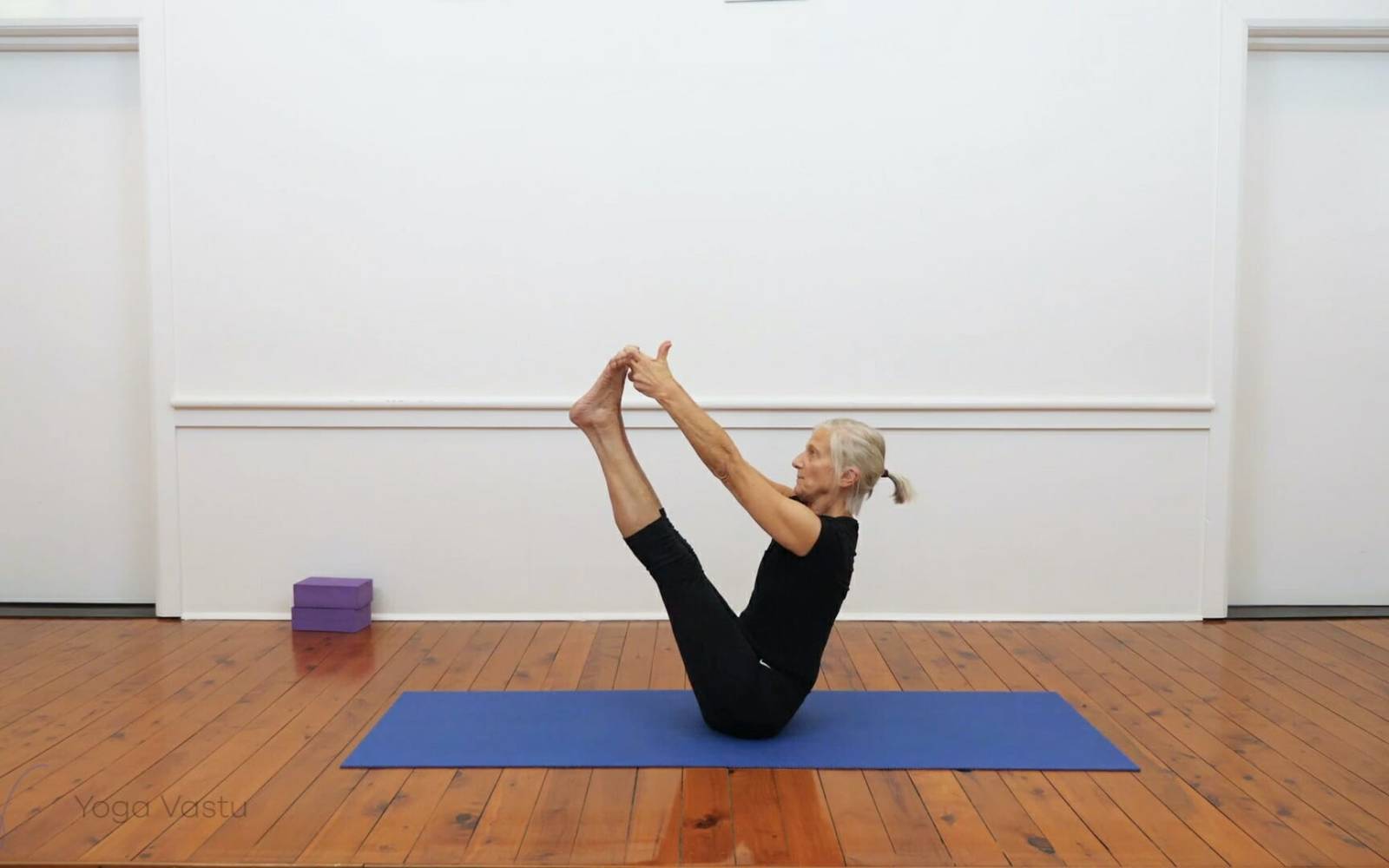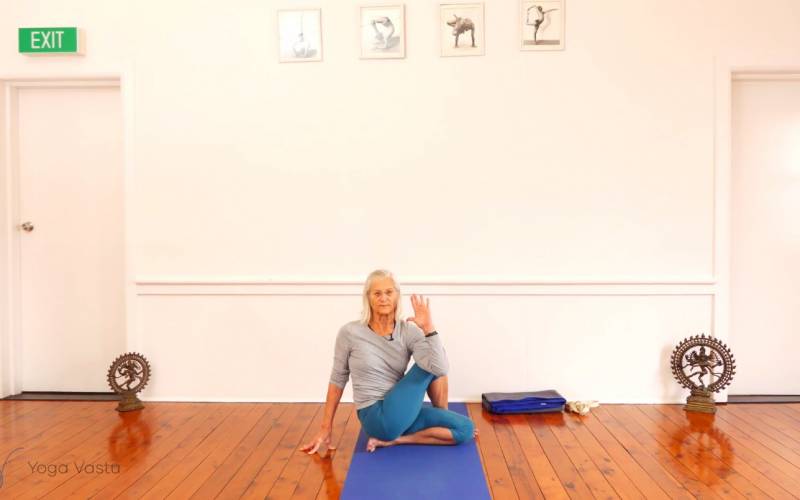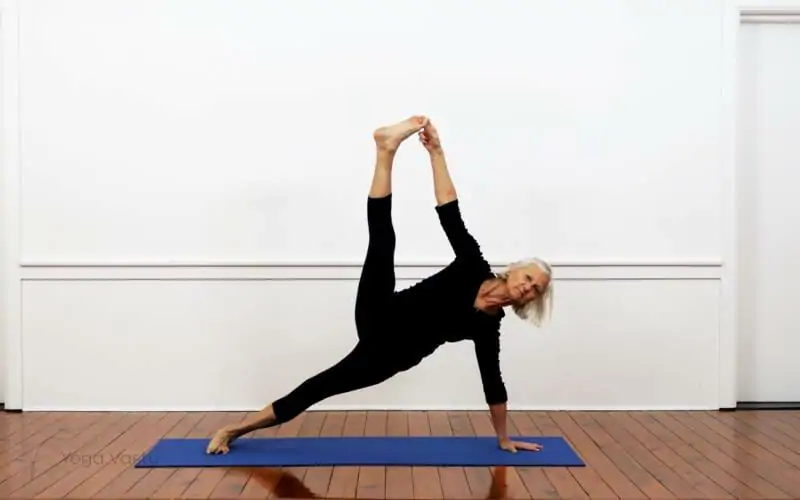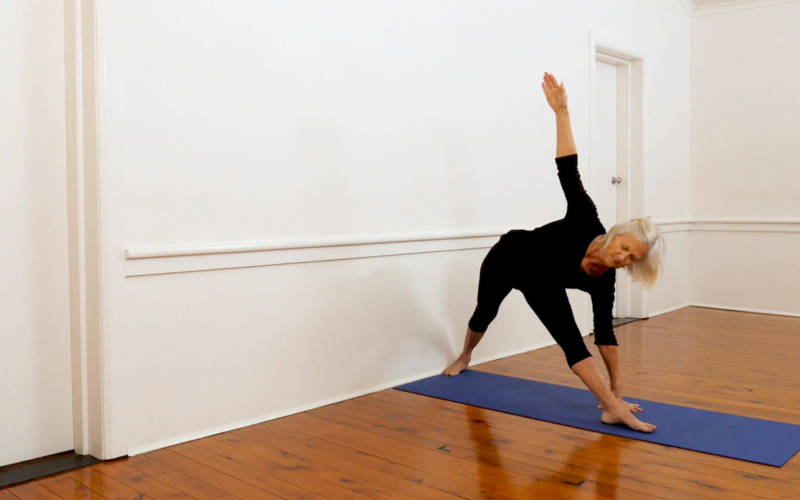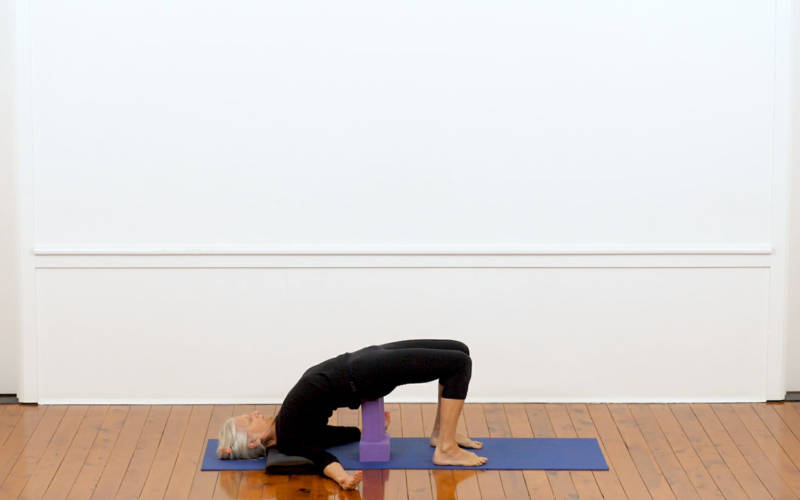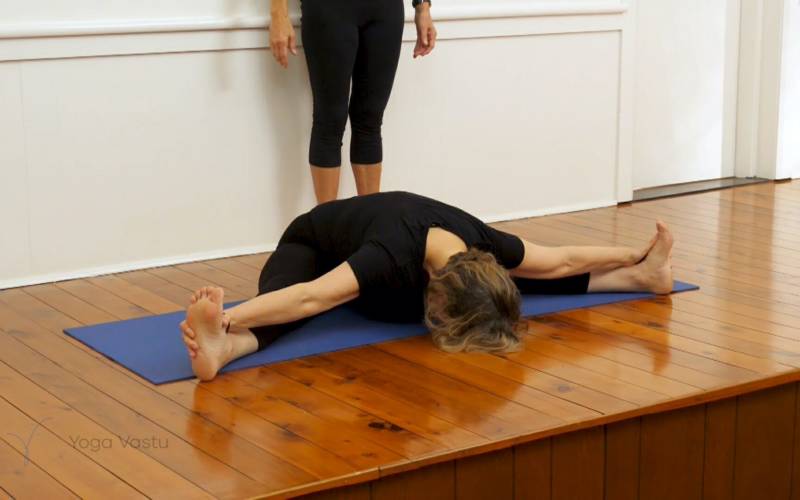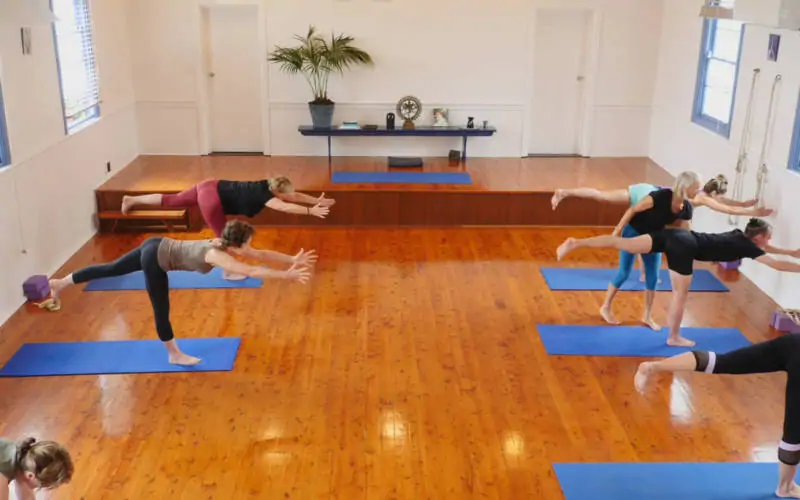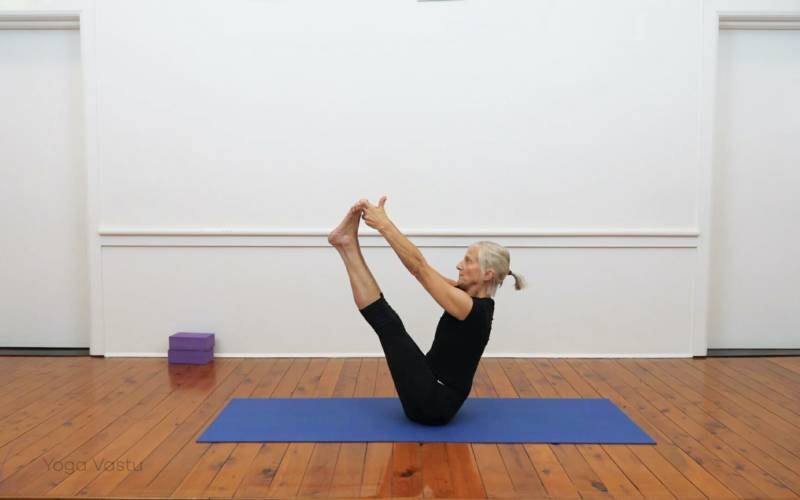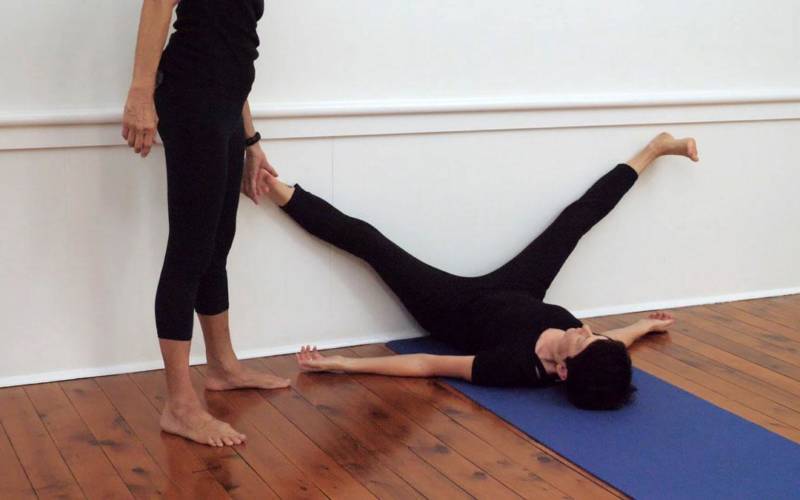How to perform Double Toe Hold
Start in a seated position. Bend your knees and grab a hold of your big toes. Extend your legs up and balance yourself on your coccyx to assume a V-shape with your body. Pull your abs in, activate your core, open your chest. If you cannot reach your ankles, use a belt to help you reach your feet.
What is Ubhaya Padangusthasana?
This is a relatively advanced abdominal strengthening asana. It requires the practitioner to have a good sense of balance, a well-trained core, and sufficient flexibility in the hamstrings. A good way to build up towards this pose is by practicing less strenuous abdominal strengthening asanas, such as the Boat Poses.
There are several ways of getting into this pose. It can come as a follow-up to Halasana, where you grab hold of your feet from behind and roll yourself upwards into balance on your coccyx. Otherwise, you can also start in a seated posture with your knees bent enough for you to be able to grab hold of your toes with your index and middle fingers.
As you stay in balance, make sure your chest and shoulders stay open and resist the urge to cave in and droop. Open and lift through your chest, pull your navel in, and maintain the V-shape as you breathe as evenly as possible.
When to use Ubhaya Padangusthasana?
Ubhaya Padangusthasana is suitable for more advanced students who have the necessary foundations to stay in this pose without tipping over or straining to the point where breathing evenly becomes an issue.
A good way of preparing for Ubhaya Padangusthasana is by performing other abdominal strengthening exercises. You can also use a belt and wrap it around your feet so that you don’t have to worry about your flexibility while you focus on improving your balance.
This pose intensely tones your abdominal muscles. It also promotes concentration as it requires the student to pay attention to multiple nuances at the same time. Shifting your focus towards holding the pose can also help take your mind off any worries you might have. All of this makes Ubhaya Padangusthasana an extremely useful pose, both for the body and for the mind.
